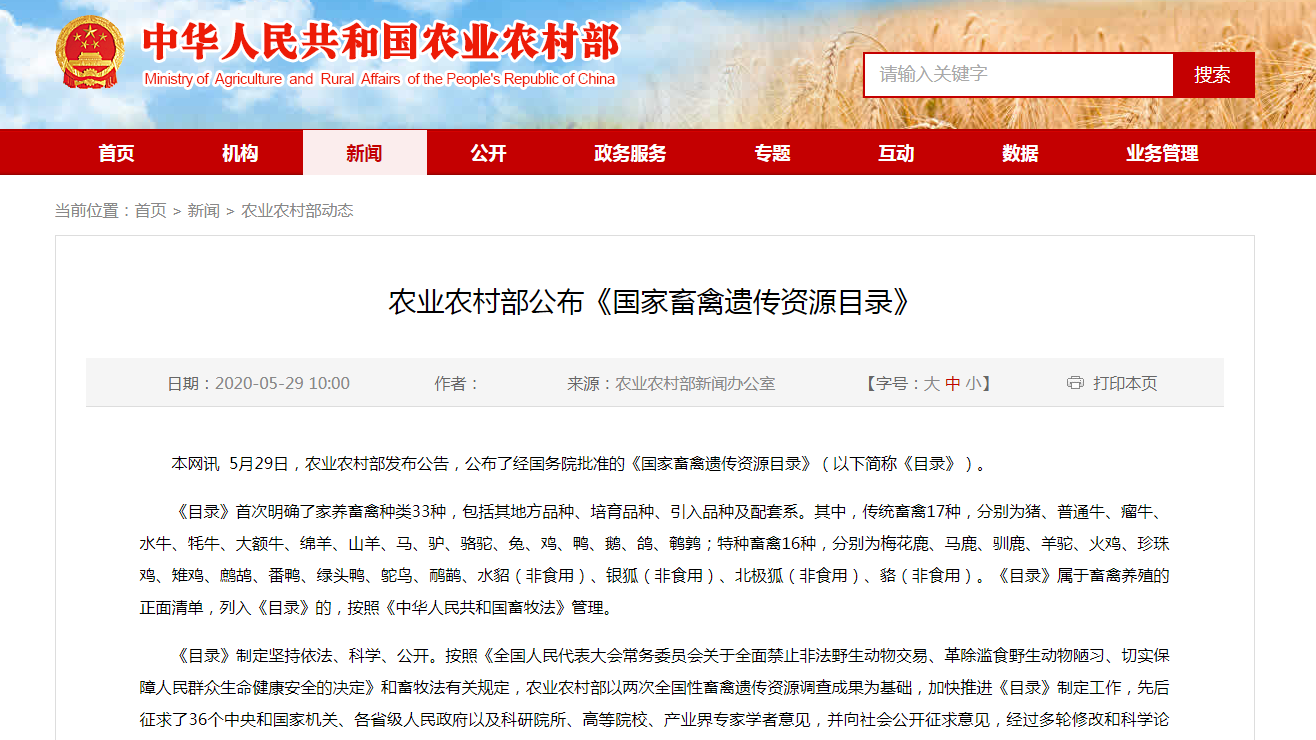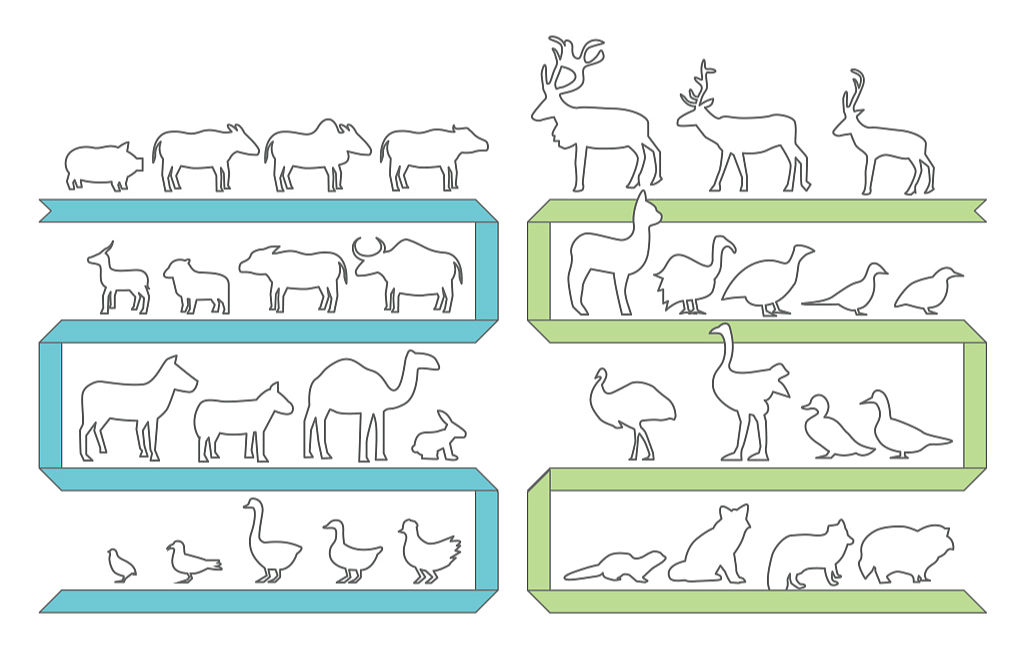A positive list clarifying 33 kinds of domestic livestock and poultry that can be bred, farm-raised, transported and traded for commercial purposes in China was released for the first time on May 29, with dogs excluded.
Published by China's Ministry of Agriculture and Rural Affairs, the National Catalogue of Livestock and Poultry Genetic Resources lists 17 species traditionally raised in the country, including pigs, cows, sheep, goats, horses, camels, donkeys, rabbits, chickens, ducks, geese, pigeons and quails.
Another 16 special livestock are also enrolled, covering sika deer, reindeer, red deer, turkeys, alpacas, guinea fowls, Muscovy ducks, pheasants, partridges, mallards, ostriches, emus, minks, silver foxes, Arctic foxes and raccoon dogs, the last four of which can be kept and traded as livestock only for non-edible purposes.

China's Ministry of Agriculture and Rural Affairs publishes the list of livestock and poultry on May 29. /Screenshot of official website
China's Ministry of Agriculture and Rural Affairs publishes the list of livestock and poultry on May 29. /Screenshot of official website
The directive comes as part of the endeavors made by Chinese authorities to clamp down on the illegal trade and consumption of wild animals and to tighten regulations on wildlife protection, as the coronavirus outbreak was initially considered to be traced back to game meat consumption.
According to the ministry, all the livestock and poultry cataloged in the list have been domesticated and bred at an industrial scale for a long time and are indispensable to agriculture production.
These species, in addition, can either provide humans with meat, eggs or milk as well as fur and fiber products or be kept to aid in work, labor or sports, after multiplying by artificial rearing in accordance with China's Animal Husbandry Law.

A total of 33 kinds of domestic livestock and poultry that can be bred, farm-raised, transported and traded for commercial purposes are enrolled in the catalogue. /CFP
A total of 33 kinds of domestic livestock and poultry that can be bred, farm-raised, transported and traded for commercial purposes are enrolled in the catalogue. /CFP
One pressing issue worth noting is that dogs are absent from the positive list. In response to the reclassification, the ministry said that listing dogs as livestock found scant support nationwide during the process of gauging public opinion.
According to a notice published on May 29 on the official website of China's Ministry of Agriculture and Rural Affairs, it was further explained that China has a long history of domesticating dogs, mainly for household safeguarding, hunting and shepherding. Nowadays, with the progress of human civilization and changes to people's ideas and dietary habits, breeding purposes for dogs have become diverse. They include keeping them as pets, rescue dogs or guide dogs, reflecting the close relationship between canines and humans.
Although dogs are not on the positive list, the ministry clarified that the species can be raised since they are not deemed wild animals. And in regard to the issue of dog-raising domestically, the ministry added that regulations related to dog management would be further explored based on accumulated experience and existing rules in the country.

A man walks his dog while basking the warm sunshine in Jinan City, east China's Shandong Province, February 10, 2020. /CFP
A man walks his dog while basking the warm sunshine in Jinan City, east China's Shandong Province, February 10, 2020. /CFP
Early in April, the draft of the catalogue aroused public concern with one of the prime focuses – whether dogs, being a pet, should be excluded and prohibited from consumption – becoming a topic of heated discussion. At that time, the proposed policy released by Chinese agricultural authorities made it clear that dogs are companion animals, not livestock or poultry.
Following the release of the directive, the ministry will further publish a catalogue certifying all species of the 33 kinds of animals, which totals more than 800. The catalogue is not unalterable, and could be updated if necessary after scientific, comprehensive and thorough evaluation as per China's Animal Husbandry Law.